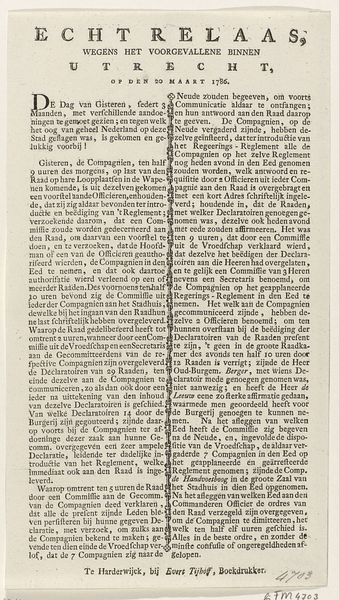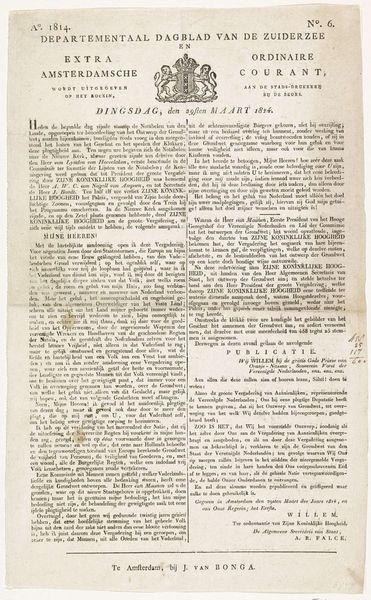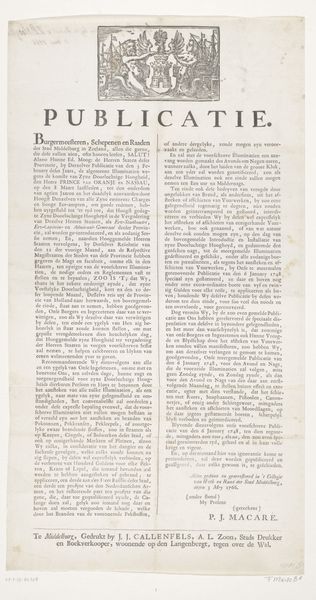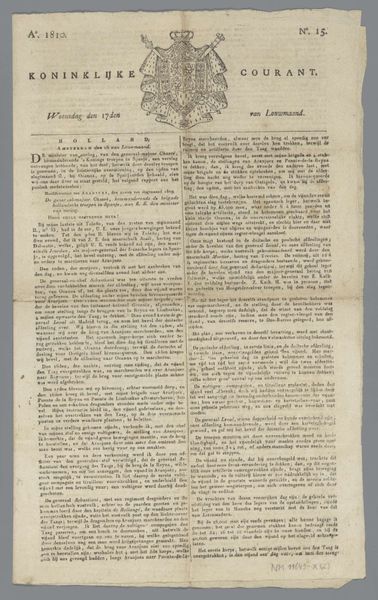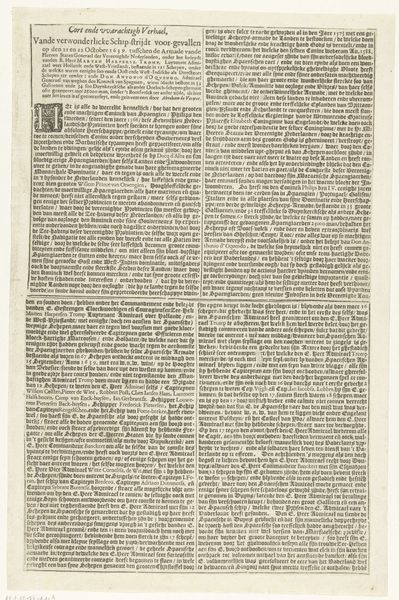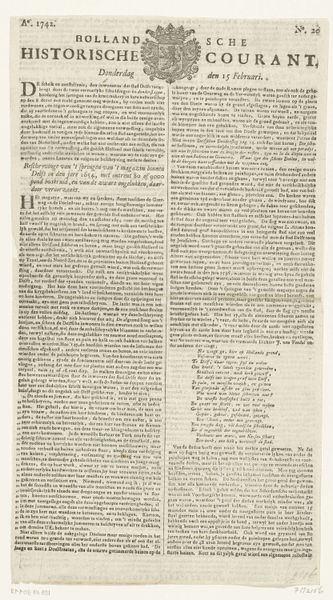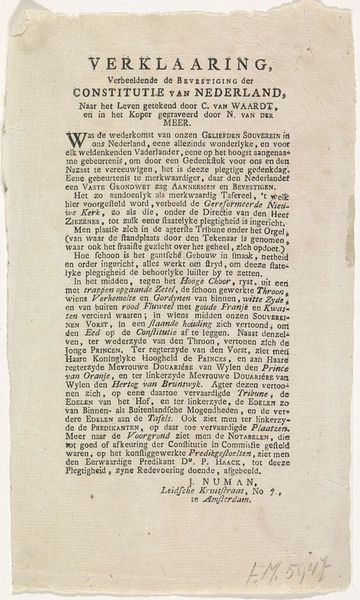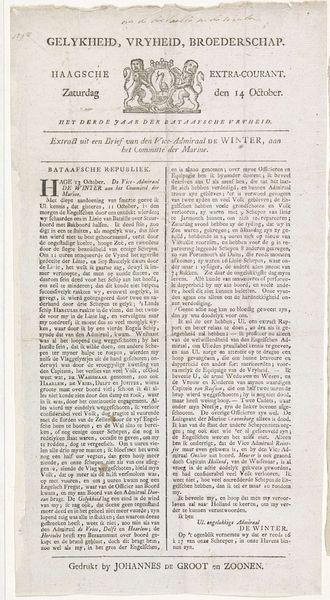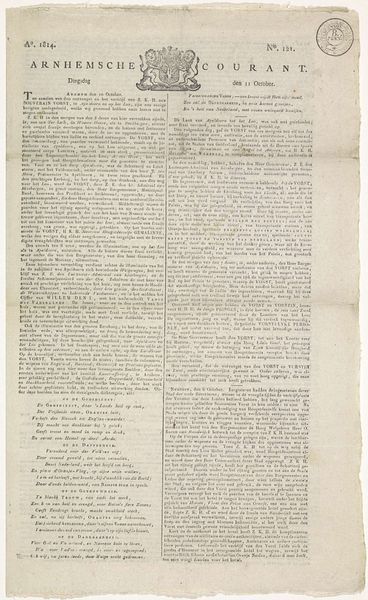
's Gravenhaegse Maendagse Na-Courant van 12 oktober 1767 over het huwelijk van Willem V en Wilhelmina van Pruisen Possibly 1767
0:00
0:00
print, typography, engraving
#
aged paper
#
dutch-golden-age
# print
#
old engraving style
#
hand drawn type
#
typography
#
fading type
#
engraving
#
historical font
#
columned text
Dimensions: height 355 mm, width 225 mm
Copyright: Rijks Museum: Open Domain
Curator: We are looking at a broadside print from 1767, produced by Stephanus de Groot. It's titled "'s Gravenhaegse Maendagse Na-Courant van 12 oktober 1767 over het huwelijk van Willem V en Wilhelmina van Pruisen," which translates to 'The Hague Monday Post-Courant of October 12th, 1767, Concerning the Marriage of Willem V and Wilhelmina of Prussia'. The print details the wedding celebrations. Editor: My eye is drawn to that aged paper quality, almost like parchment. I sense an immediacy and fanfare, as if this were the royal wedding announcement in a physical form—imagine a town crier unrolling this, proclaiming the news. But looking at it now it brings forth an aura of fragility and forgotten celebrations. Curator: Indeed, its immediacy and materiality offer a fascinating glimpse into the dissemination of news during that era. Engravings like this were pivotal in shaping public opinion and constructing narratives around significant events like royal marriages. Its aged character underscores its role as a historical document. Editor: Right! But more than the details, look at the arrangement. See how dense and text-heavy the main block is and how much blank space surrounds it. I find that almost dizzying, all those columns competing for attention. Maybe to some extent it adds some texture, creating some dynamism, or it shows the limitations of the printing technology. Curator: The dense typography was a typical feature of Dutch Golden Age prints and newspapers. And yes, you are right. It reflects both the conventions of the time and technological constraints. The inclusion of details about festivities, royal attendees, and even specific garments, was aimed at emphasizing the grandeur and significance of the event, solidifying the monarchy's image and role in society. Editor: I keep thinking about what happened to those royal figures down the line, or where this print was tacked, who its audiences were, or even where that exact physical print was stored ever since then. Art has a way of pulling you down these wild imaginings, no? It definitely reminds you of how something material can evoke all of those emotions across time. Curator: Absolutely, and perhaps it is precisely this imaginative and sentimental connection to the past that explains our perennial interest in studying such prints, which provide us access to how historical actors and events unfolded into public discourse, shaping broader social dynamics and, of course, cultural legacies.
Comments
No comments
Be the first to comment and join the conversation on the ultimate creative platform.

